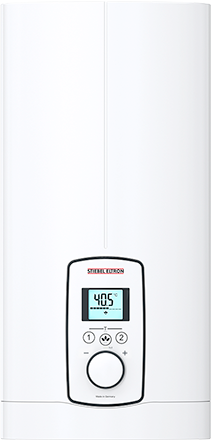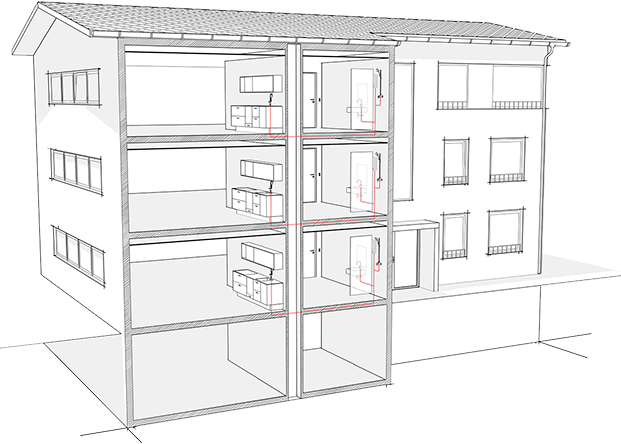


Decentralisation - efficiencies by design
Compact and space saving the Stiebel Eltron range of instantaneous electric hot water systems can be conveniently placed close to the location of where hot water is required.
The three phase electric instantaneous hot water systems are ideal for apartment developments as a true point of use instant hot water system. Placed close to the point of use minimises the length of pipe required to deliver hot water to the outlet and as such deliver hot water to the outlet faster.
This results in saving water as commonly cold water is wasted while waiting for hot water to arrive. In addition energy losses are reduced which occur when water cools down in the pipe work between draw offs.

Architects need to be on top of new technology, trends and desires to keep up with the changing Australian residential landscape. Specifying an appropriate hot water system can unlock extra space, reduce energy use and the ongoing cost to residents.
Download the WhitepaperWant to learn more?
Click the button below and fill out your details or call 1800 153 351.
Traditional central water systems are bulky and can take away valuable communal spaces. A compact decentralised system can free up space on the building's roof or underground area for amenities, as they are small in size and can be installed in the apartment close to where the water will be used. Also, less plumbing is needed between the heater and where the water is used, reducing labour costs and making installation more cost-effective.
CloseInstantaneous water systems only heat up the water when it is needed, rather than storing large amounts in anticipation of predicted usage, and they will never run out of hot water.
CloseWater heating accounts for about 21 per cent of the energy used from an average Australian home. Centralised hot water systems are increasingly going out of favour due to their running costs and environmental impact. A major drawback of these systems is the energy needed to keep a large system consistently at the desired temperature, even when the water is not in use, and the amount of heat, which is lost transporting the water from the storage system to the point of use.
Installing an efficient electric instantaneous water heating system can greatly reduce a building's environmental footprint, allowing residents to save money and potentially reducing greenhouse gas emissions without compromising their lifestyle.
CloseElectric instantaneous water heaters facilitate a true user-pays option. The water is only heated when it is required, eliminating water and energy wastage and ensuring energy bills to the end user are accurate.
CloseElectric instantaneous water heaters deliver hot water with precision. Efficient by design, the units don't store water so you don't get the heat losses that occur in traditional storage hot water systems. Installed close to the point of use, and reducing dead legs - saving you both water and energy.
CloseDecentralised water heating systems simplify and streamline the process during construction as the hot water systems are installed in each individual residence, making it possible to carry out a staged handover. An instantaneous electric hot water solution can be positioned where it is needed without the restrictions associated with gas feeds, flues or venting, simplifying the construction process. Also, less plumbing is needed between the heater and where the water is used due to its placement within a residence, reducing labour costs and making their installation more cost-effective.
Close